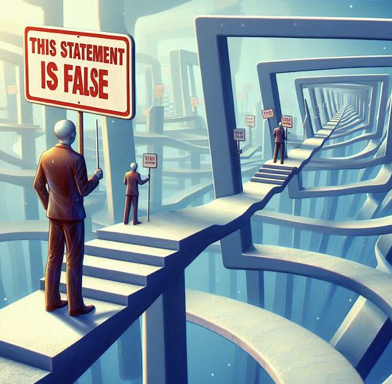One of the most intriguing and enduring philosophical conundrums in history is Zeno’s Paradox.
This paradox, proposed by the ancient Greek philosopher Zeno of Elea, has puzzled, intrigued, and frustrated thinkers for over two millennia.
Table of Contents
Who was Zeno of Elea?
Zeno of Elea was a pre-Socratic philosopher born around 490 BC in southern Italy.
He was a student of Parmenides, another prominent philosopher of the time.
Zeno is best known for his paradoxes, which have been the subject of ongoing philosophical and mathematical debate.
The Essence of Zeno’s Paradox
Zeno’s Paradoxes are a set of philosophical problems generally thought to have been devised by Zeno of Elea to support Parmenides’ doctrine that contrary to the evidence of one’s senses, the belief in plurality and change is mistaken, and in particular that motion is nothing but an illusion.
The Dichotomy Paradox
One of the most famous of Zeno’s paradoxes is the Dichotomy Paradox, also known as the Race Course.
It states that in order to reach a certain point, one must first reach half that distance, then half the remaining distance, and so on.
This creates an infinite number of steps, implying that the total distance can never be covered.
Achilles and the Tortoise
Another well-known paradox is Achilles and the Tortoise. In this scenario, Achilles, a swift runner, gives a tortoise a head start in a race.
However, by the time Achilles reaches the tortoise’s starting point, the tortoise has moved a little further.
This process continues ad infinitum, suggesting that Achilles can never overtake the tortoise.
Resolving Zeno’s Paradox
Over the centuries, many solutions have been proposed for Zeno’s Paradox.
The most widely accepted resolution today involves the concept of a limit in calculus, a branch of mathematics developed long after Zeno’s time.
The Concept of Limits
The concept of limits, introduced by mathematicians in the 19th century, provides a framework for defining quantities that result from infinite processes.
In the context of Zeno’s Paradox, it allows us to sum an infinite series of numbers and arrive at a finite result.
Infinity in Mathematics
The introduction of infinity in mathematics also played a crucial role in resolving Zeno’s Paradox.
The concept of infinity allows us to understand that while there are an infinite number of steps in Zeno’s scenarios, the sum of these steps can be a finite number.
Impact of Zeno’s Paradox
Zeno’s Paradox has had a profound impact on various fields, including philosophy, mathematics, and physics.
It has spurred debates about the nature of reality, the concept of infinity, and the continuity of space and time.
FAQs on Zeno’s Paradox
1. Who was Zeno of Elea?
Zeno of Elea was a pre-Socratic philosopher born around 490 BC in southern Italy. He is best known for his paradoxes.
2. What is Zeno’s Paradox?
Zeno’s Paradoxes are a set of philosophical problems that challenge our understanding of motion and infinity.
3. What is the Dichotomy Paradox?
The Dichotomy Paradox, also known as the Race Course, states that in order to reach a certain point, one must first reach half that distance, then half the remaining distance, and so on, creating an infinite number of steps.
4. What is the paradox of Achilles and the Tortoise?
In the paradox of Achilles and the Tortoise, Achilles, a swift runner, gives a tortoise a head start in a race.
However, by the time Achilles reaches the tortoise’s starting point, the tortoise has moved a little further.
This process continues ad infinitum, suggesting that Achilles can never overtake the tortoise.
5. How is Zeno’s Paradox resolved?
The most widely accepted resolution to Zeno’s Paradox involves the concept of a limit in calculus and the introduction of infinity in mathematics.
6. What impact has Zeno’s Paradox had?
Zeno’s Paradox has had a profound impact on various fields, including philosophy, mathematics, and physics.
It has spurred debates about the nature of reality, the concept of infinity, and the continuity of space and time.
Summary – Zeno’s Paradox
Zeno’s Paradox, proposed by the ancient Greek philosopher Zeno of Elea, is a set of philosophical problems that challenge our understanding of motion and infinity.
While solutions involving calculus and the concept of infinity have been proposed, the paradox continues to provoke thought and debate, underscoring its enduring relevance and impact.
Related


